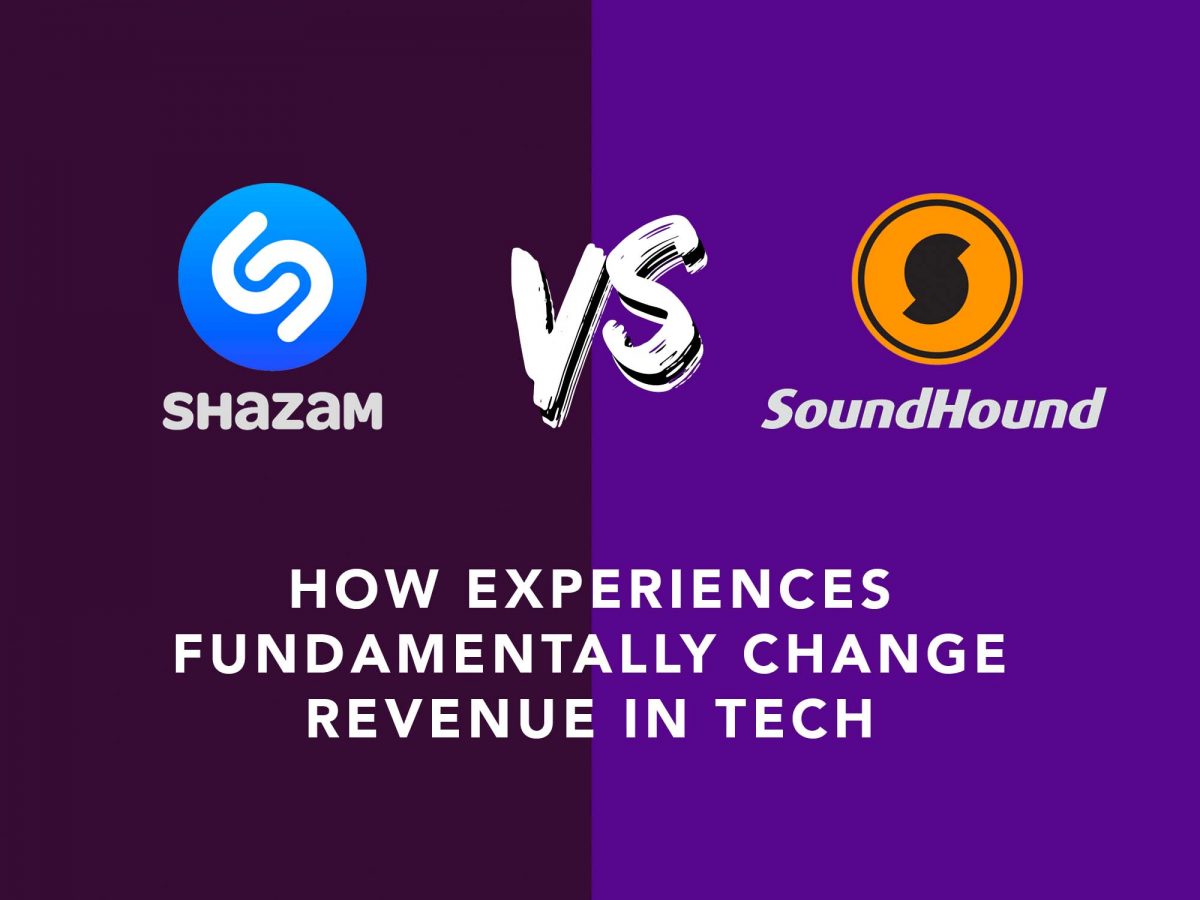Shazam. When it came out, to be frank, I was on the other side of the river. I was on team SoundHound. The reason for that — I don’t know. What’s interesting is that I jumped ship after a certain point.
Haven’t you heard of SoundHound? Or maybe you did but not anymore since some time ago? Me neither. I naturally can’t know every single reason but here’s the perspective I want to look at it from: their experience.
The experience of using SoundHound vs the experience of using Shazam. Here’s how the apps look like

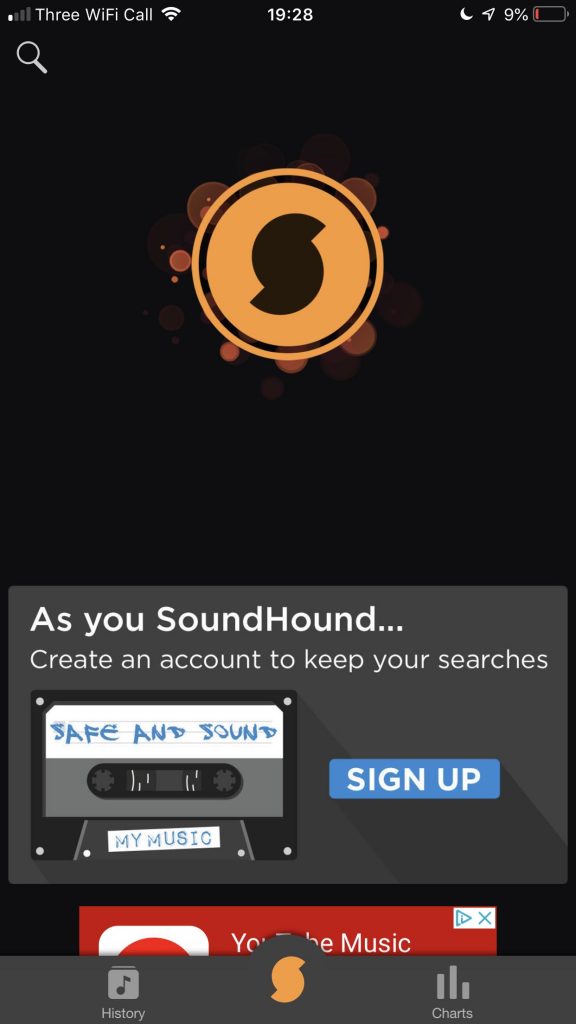
And the concept is (and was, even when they started) really simple: press the button, let the phone listen to a song,
So their audience must be somewhere there. And here’s my main point:
Shazam understood better what they were about. Hence, their sell to Apple for $400m in September 2018.
Now, that’s not all that is to this story. SoundHound existed since 2005 (pre-iPhone) and were focused ever since (to this day) on general audio/voice technology. If anything, it’s a lost battle
The screenshots above are the apps today — at least their music recognition part. Have a look at how they looked like in 2010
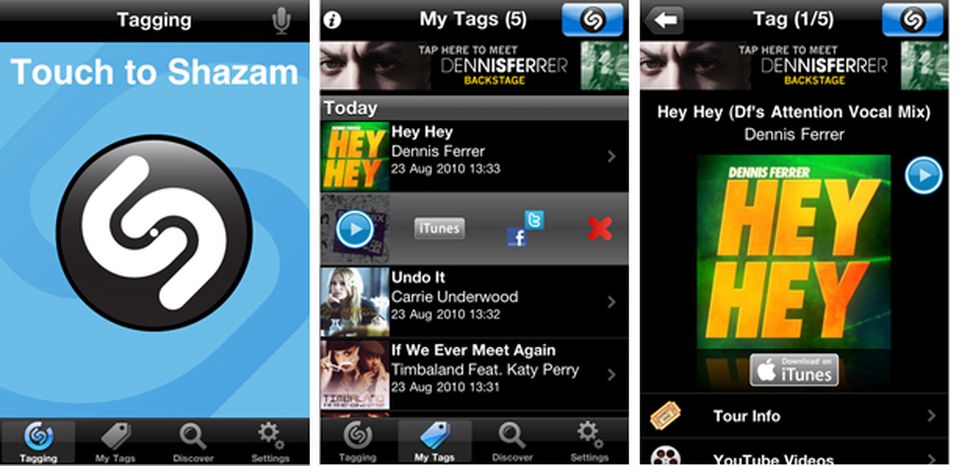
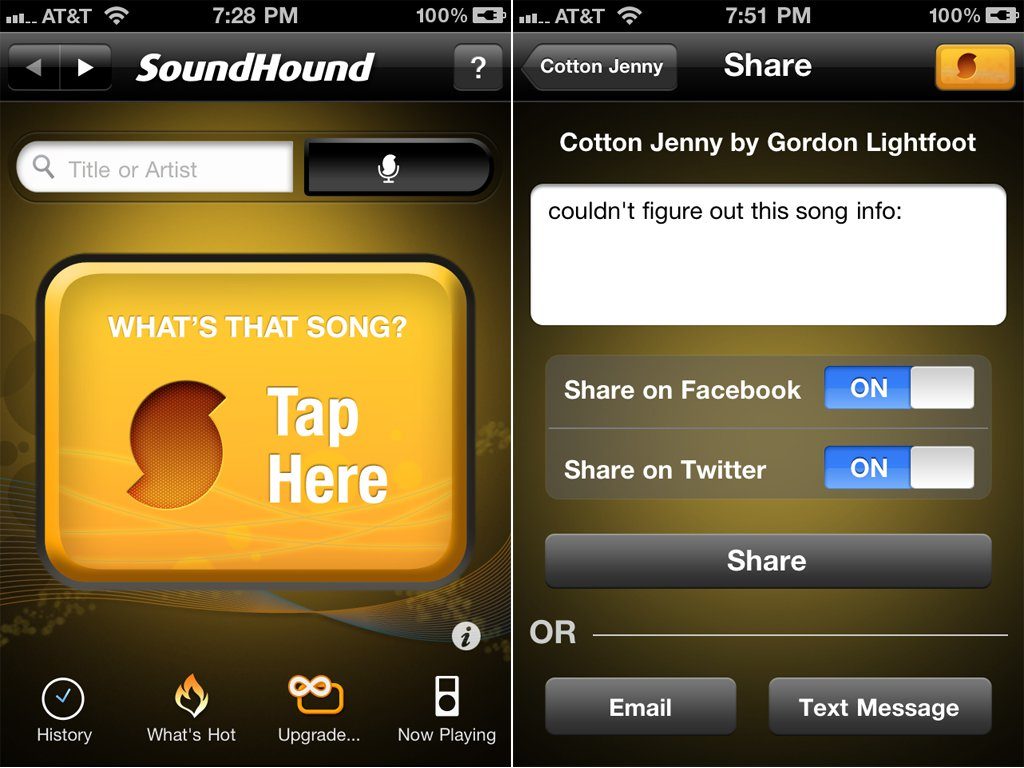
and this is how they looked in 2014, to have an idea of their evolution and their interface mid-way through
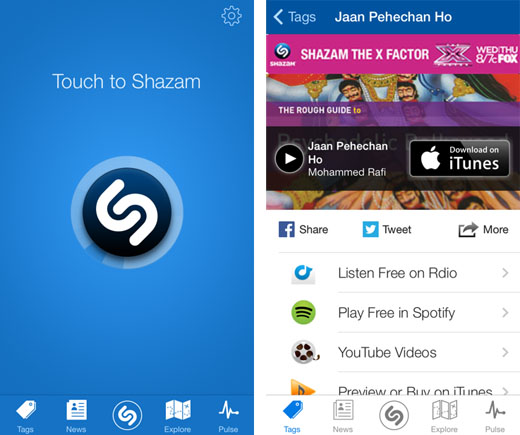

That’s simply how they evolved along the way. The difference in case it’s not apparent (especially if we’re looking at it through the lens of a young cohort) is that one seems to be simpler than the other one. Design trends were different along these 9 years difference (from 2010 to today) but on an essence level, one is bloated and the other one says “Touch to Shazam”.
So what’s easier: to get straight to the point or bloat the way of navigating? Mind you: it’s easier for us to call that out looking retrospectively and way harder in the heat of the moment.
Was this the only victory of the war? Clear no.
It wasn’t just this but the next things I’m going to remark that made Shazam get on top.
As noticed in history before, it’s all about leverage. While SH went on to have paid or premium versions, Shazam made sure they’ve always had some free alternative. Yes, they had a premium system as well back in the day before ditching it — but were clearly in the right direction understanding the freemium path the overall tech world was heading towards.
Again, I don’t know their full story as I’ve had no involvement with any of the companies. Here’s another gem: integration. While Soundhound was sleeping, Shazam integrated their service into Snapchat. Not particularly mind-blowing but given the traction that Snapchat has got (especially in the beginning!), my estimate would be that it piggybacked their success — at least to a degree.
Those are two things I’ve noticed as a partial observer. Surely there are more points to the story.

All of that because…
…of the experience of using the two. Simple and free vs premium and complicated — albeit more precise and powerful, let’s give credit to SoundHound. It’d make sense why their product would be more powerful given that what they were focused on was more than just the music-recognition software — which was complementary to Shazam on only but a side of their multi-faceted output.
A bit more on SoundHound in a bit but let me stress it again loud and clear: it’s only a battle that they’ve lost.
And let’s remark something else: it was clearly a matter of differentiation, since it was, in a sense, a scenario of perfect competition — both had this overlapping experience of
“Oh hey what you’re doing there, why are you pointing your phone towards the speaker?”
“Oh it’s this app that’s recognising the song”
“Holy crap, I didn’t know that existed! What’s the name?”
The same would apply for BOTH of the two. And the experience was what made them different. Snapchat, the integration for the young, the simple design, the not-so-complex and not-nerdy-technical-all-knowing-robot aura, somehow friendly and bright blue. The microinteraction after you’d press the button. The ads that were less discomforting for people as opposed to paying on the App Store to download the app in the first place.
And it got well. Some might argue that $400m is a small number for a company like that but it’s not the point. Monetary value was not the aim of this article. The utility when there

Back to SoundHound
Probably around 2013-2014 SoundHound realised it’s not worth getting their hands dirty anymore and got back to their higher vision of audio/voice software. Enter Houndify in 2015 which is easy to understand as a competitor of Amazon’s Alexa — a voice interface.
I think they’re doing well and will do even better exactly because of this shift. Voice is something I’ve vouched for some time and more and more people are boarding this train of voice being the next thing.
Congratulations to them for shifting the train and having the vision to do so in the first place.
Yeah cool. The practical bit?
Oh, the practical bit. Yes. Let’s keep it to this: the usual self-awareness in business, accepting a defeat so you can win the war and, if you want less dreamy more practical, make it god damn tailored to who uses it. Get to know them. SoundHound wasn’t as tailored as Shazam for their youngsters (and that could mean 30 year olds as well! Doesn’t have to necessarily be millennials!)
I’d say Shazam’s leading sense was better than their counterparts.
Here’s the very good news: this battle was a ferocious one and a lot of
Lastly and most importantly, it’s about the feeling. Not the “I’ve got a feeling” happening but all this “get to know the users” is based on empathy and how much you feel them. If you haven’t got it or simply the idea that I’ve mentioned makes you wince, it’s one of the reasons why CEOs hire us and clearly something that we touch every time we have an engagement. If it doesn’t make you pull a face but on the contrary makes you energized — I’m happy to hear about it. Mail me at [email protected]
About Ch Daniel
I run chagency, an experiences design agency that specialises on helping tech CEOs reduce user churn. We believe experiences are not only the reason why users choose not to leave but also what generates word of mouth. We’re building a credo around this belief.
I’ve also created an infinitely-valuable app for sneaker/fashion enthusiasts called Legit Check that impacted hundreds of thousands over millions of times – check it out at chdaniel.com/app
Please share this with someone and subscribe to our newsletter!— helps us keep pumping content?


